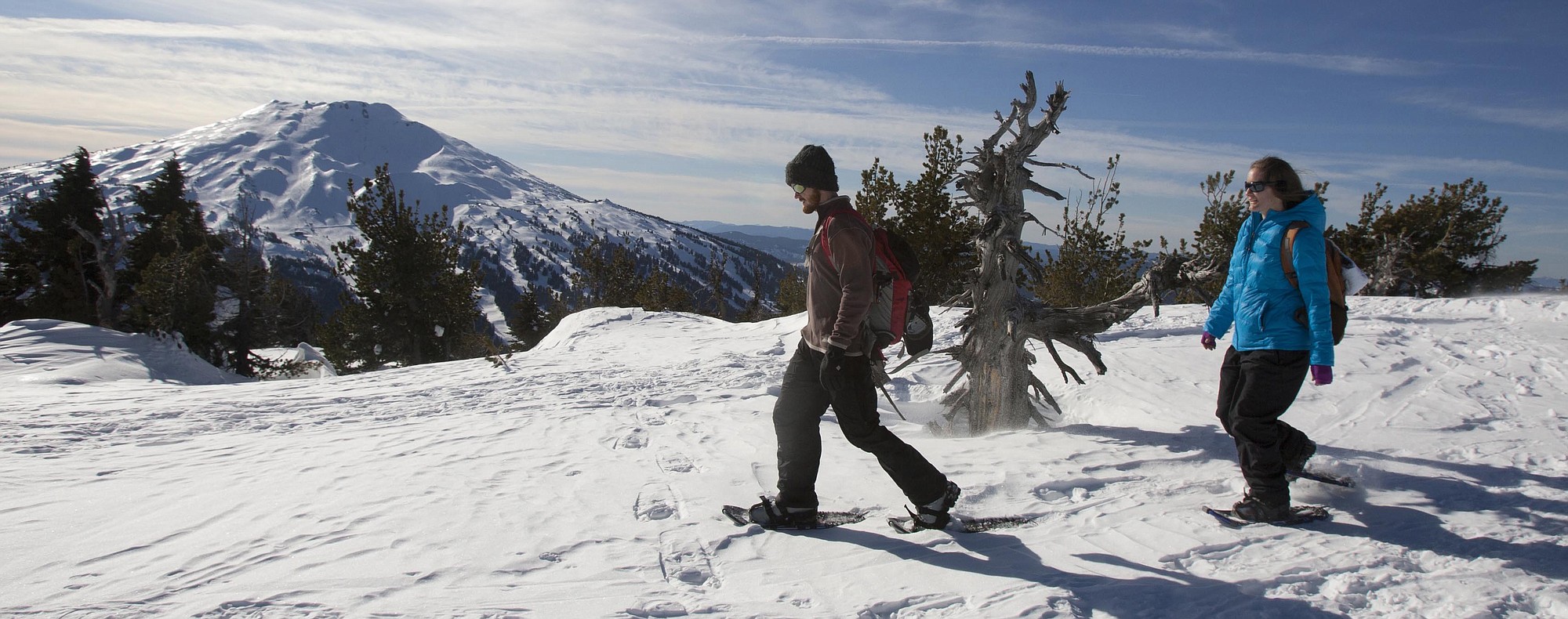BEND, Ore. — First of all, I must admit that I have never snowshoed simply for the sake of snowshoeing.
Until last week, my only snowshoeing experience was as a means of getting somewhere, usually to the top of a ridge or peak, down which I could then snowboard.
So while many outdoors enthusiasts in Central Oregon are well-trained in the art of trudging through the snow, I am not among them.
Snowshoeing does not require as much gear and as many logistics as other wintertime sports such as cross-country skiing or downhill skiing and snowboarding. You basically just strap on the shoes and go.
However, there are a couple of important things to know before you go. First, snow is required. This might seem obvious, but I mention it because snow has been pretty hard to find this winter.
Last week I drove all the way up to Edison Butte Sno-park — elevation 5,000 feet — and the snowshoe trails there were interrupted by swaths of bare dirt. Conditions were better for mountain biking than for snowshoeing.
Areas in Central Oregon above 5,500 feet seem to have enough snow for winter activities, but these current warm temperatures are certainly not helping matters.
“We’re just going higher up, and we’re staying in the forest, so that the sunshine and hot weather hasn’t compacted too much of that snow,” says James Jaggard, general manager of Bend’s Wanderlust Tours, whose outdoor excursion offerings include snowshoe tours.
Jaggard adds that snowshoeing is possible at Vista Butte Sno-park, elevation 5,900 feet, but after seeing the conditions at Edison I wanted to ensure that my next stop would be high enough to not be scraping through dirt and rocks on my snowshoes.
After trekking around for a bit at Edison, I got back in my car and drove up to Dutchman Flat Sno-park — at about 6,250 feet — where there was enough snow for snowshoeing, cross-country skiing and snowmobiling.
Dutchman Flat is a busy place in the winter, but one advantage of snowshoeing is the ability to dodge the crowds and escape deep into the woods, as groomed trails or ski tracks are not required.
“You can go weave through the trees if you want,” Jaggard says. “There’s not really any limits when you’re on snowshoes. There are myriad advantages. Personally, I love cross-country skiing out of Dutchman on my own time, but you get something special out of snowshoes.”
As skiers cruised past me at Dutchman, I did experience a few moments of envy, longing for a pair of skis so I could move faster and glide over the snow, rather than slogging slowly along while crunching into it with every step.
But eventually I sneaked out far into the Deschutes National Forest all by myself, away from any skiers, away from the whine of snowmobile engines and away from any sort of trail. I had to be careful to not get lost, but after a couple of hours of enjoying the solitude in the woods, I just followed my footsteps back the way I had come.
“It really allows you the freedoms that you don’t have otherwise,” Jaggard says of snowshoeing. “Yes, you’re not moving as fast, but you don’t miss as much, either. You’re able to see things and really control your speed, and where exactly you want to go.”
I had the time to notice several gray jaybirds flying around a small ponderosa pine tree, bugging me for food.
I also discovered something about snowshoeing that I had never realized when the ultimate objective was snowboarding down a mountain — snowshoeing is deceivingly hard. It is actually a “huge” cardio activity, according to Jaggard. And breaking trail only makes it harder. But Jaggard says that with these low snow conditions, snowshoeing becomes a bit easier.
“It’s great for covering more distance,” he says. “In the past weeks since we haven’t gotten much fresh snow, we’re actually able to get out farther on our tours than usual, just because the going’s a little easier without the deep powder. It’s allowed us to bring guests into parts of the forest that they normally wouldn’t see; so much quieter, more ability to see animal tracks.”
It is nice to see somebody putting a positive spin on this “winter” we are experiencing. But deep snow or little snow, I am now convinced that snowshoeing for the sake of snowshoeing is a worthwhile winter activity.
Even for the most avid skiers and snowboarders.



